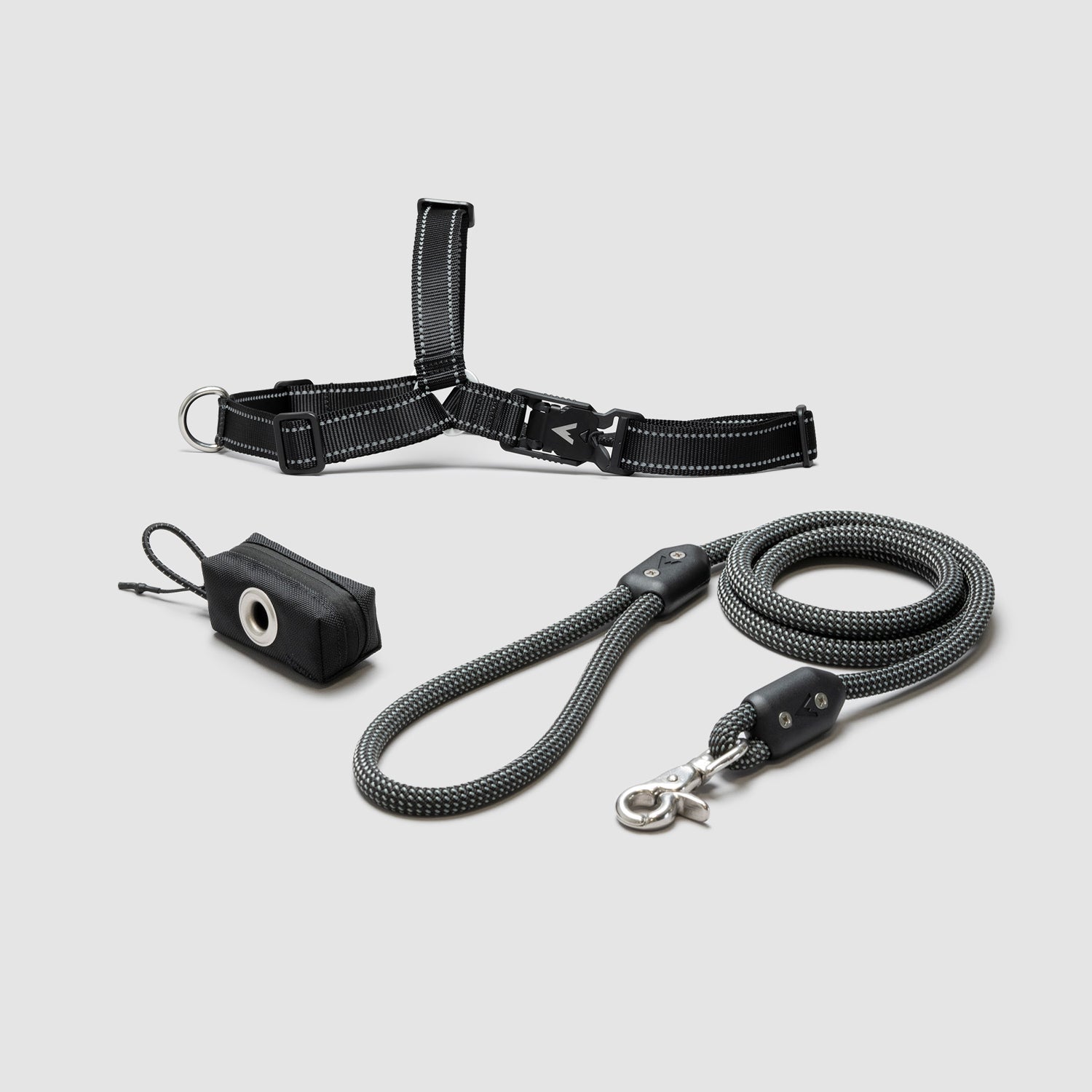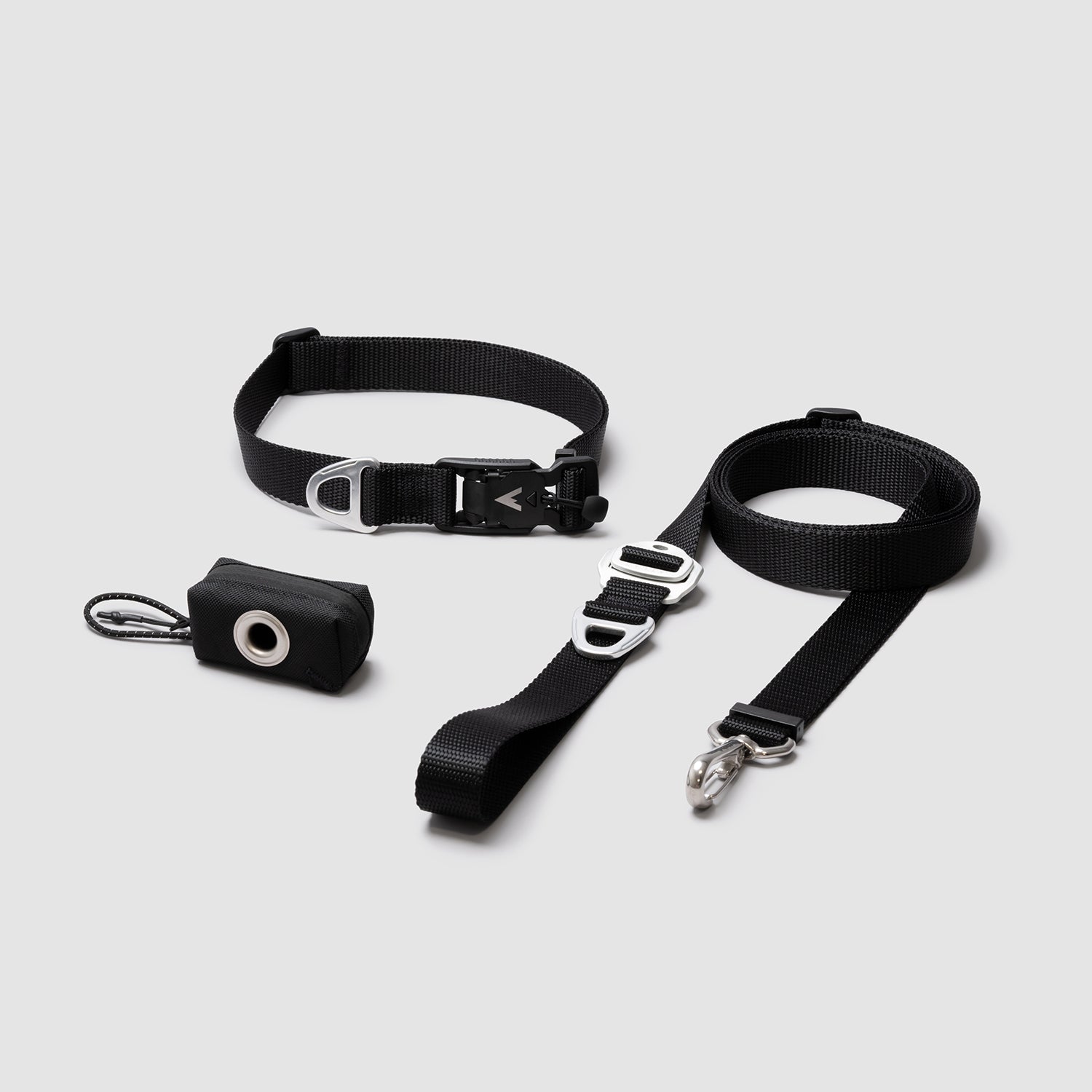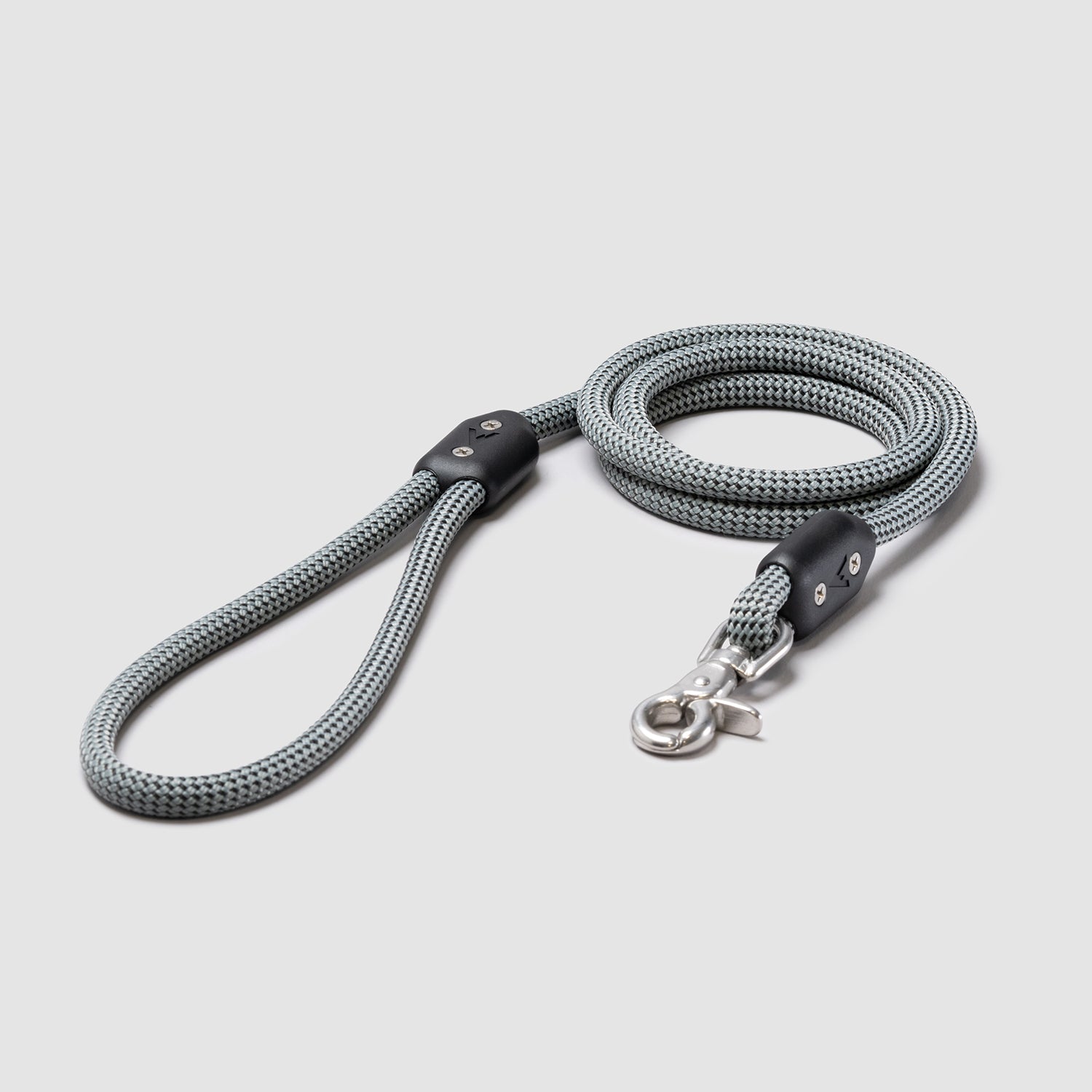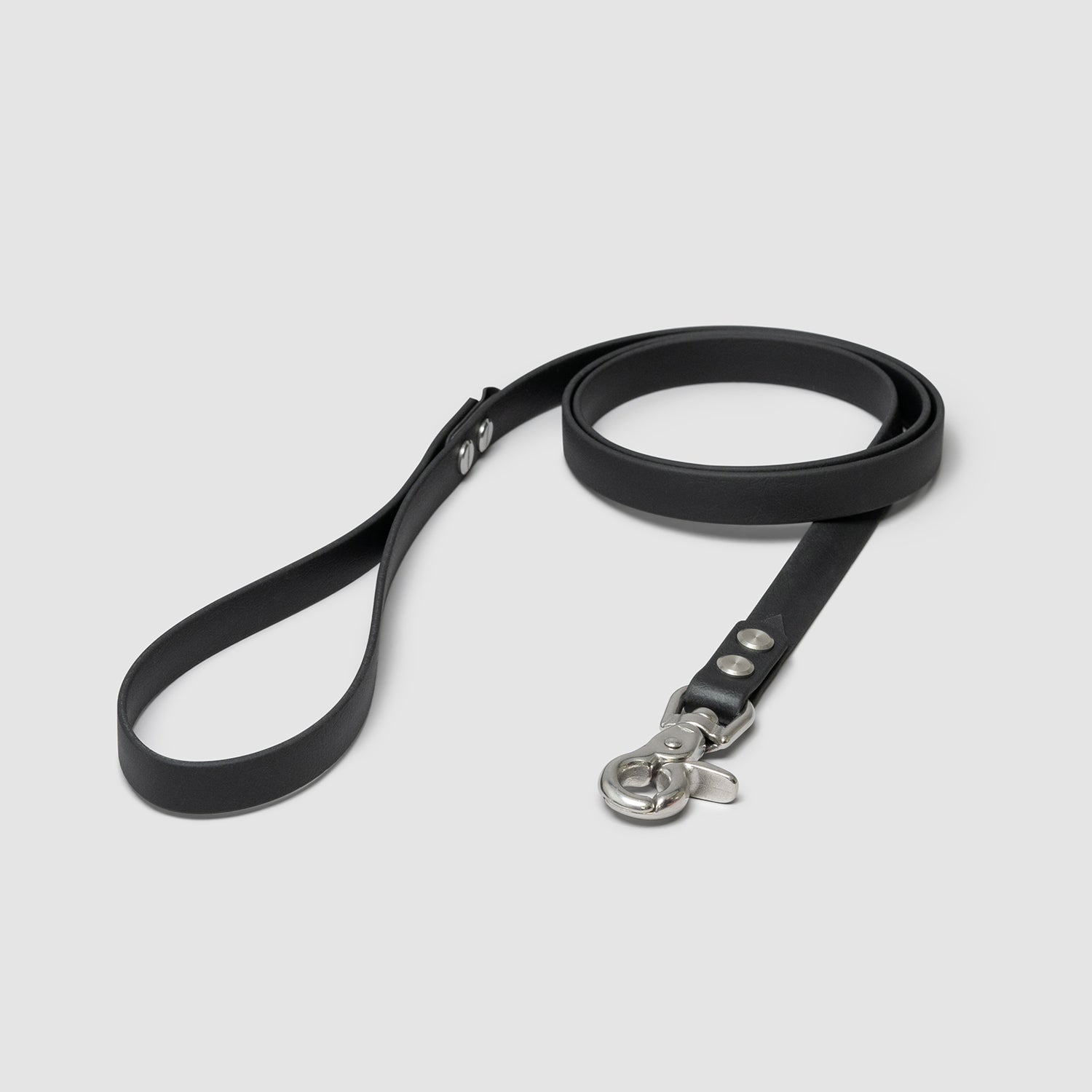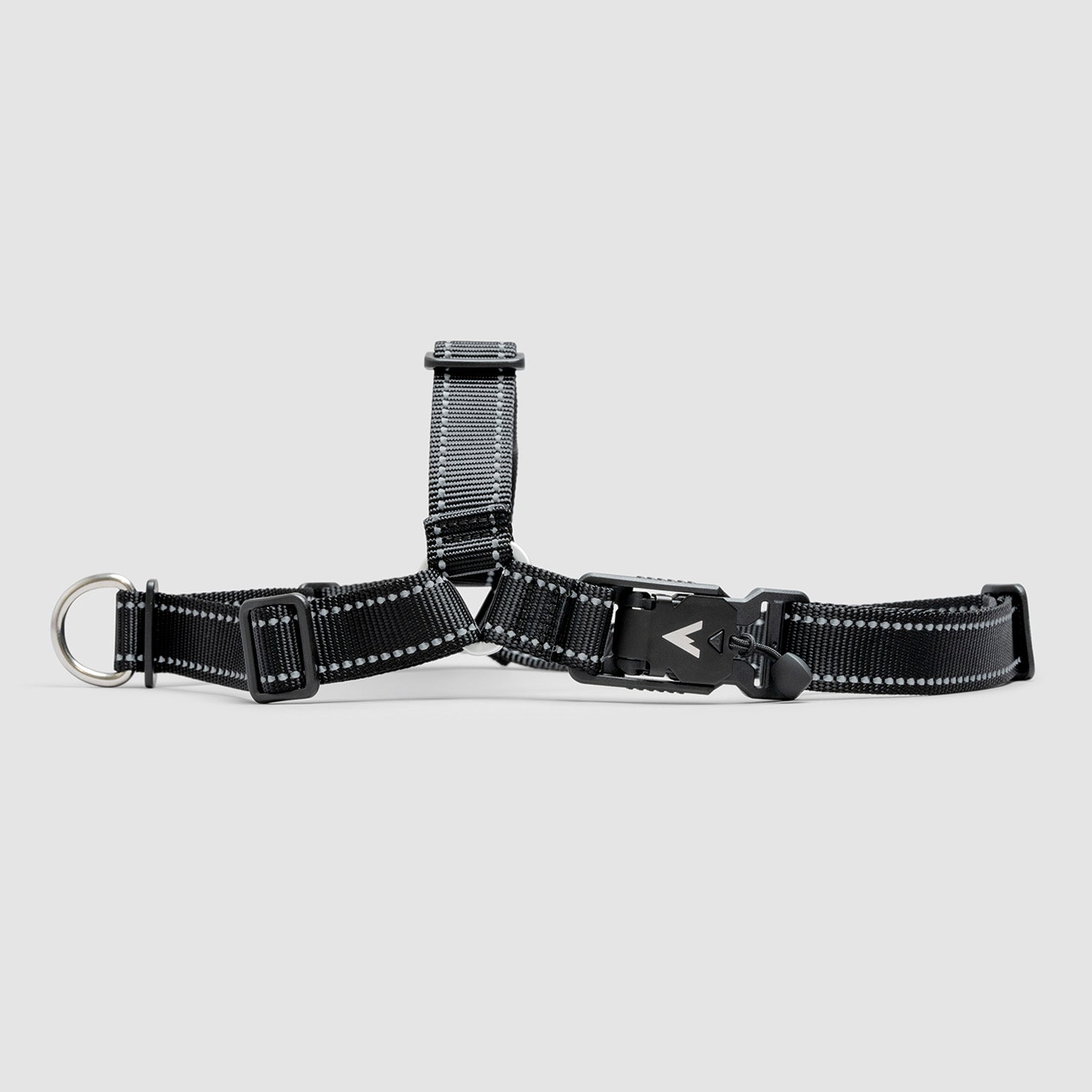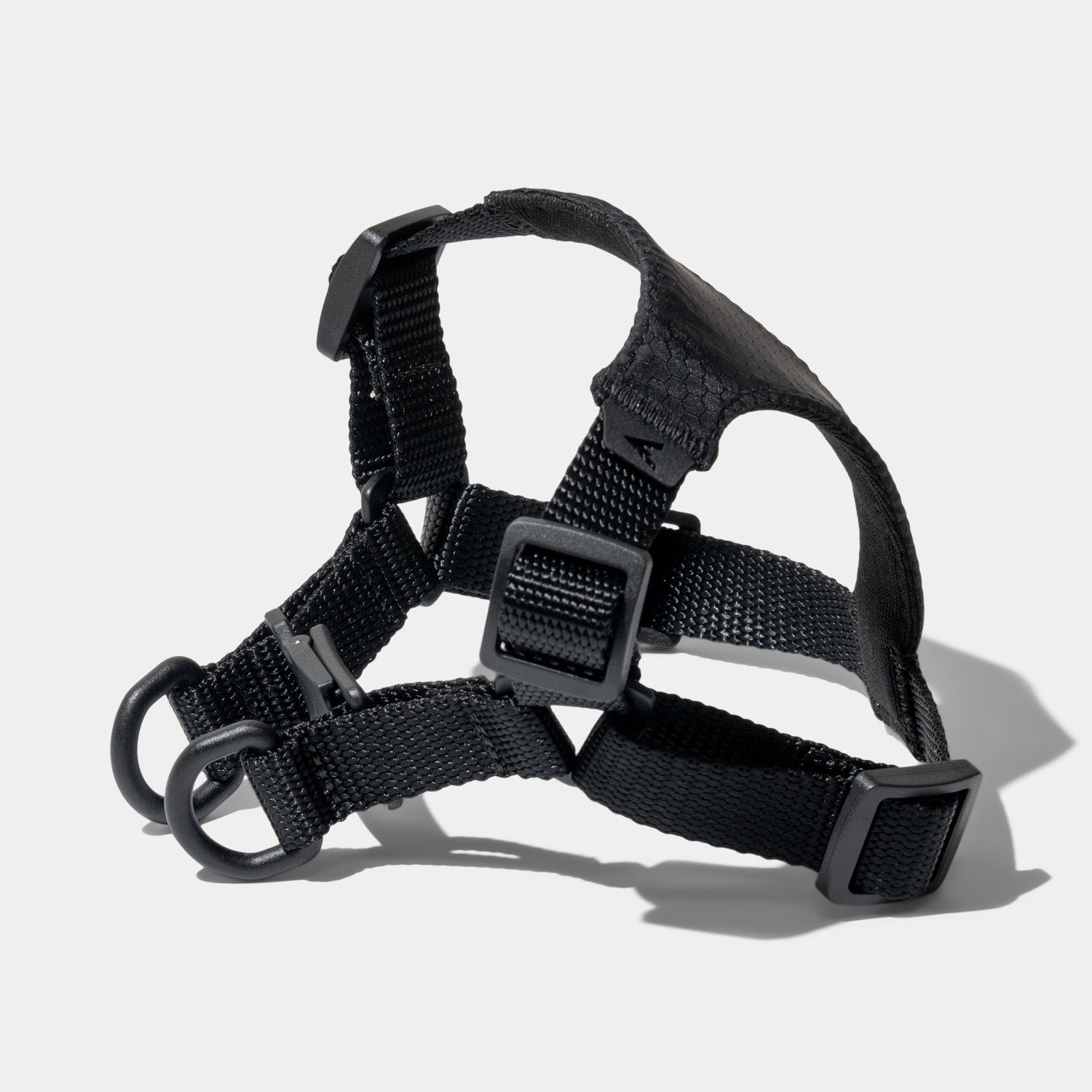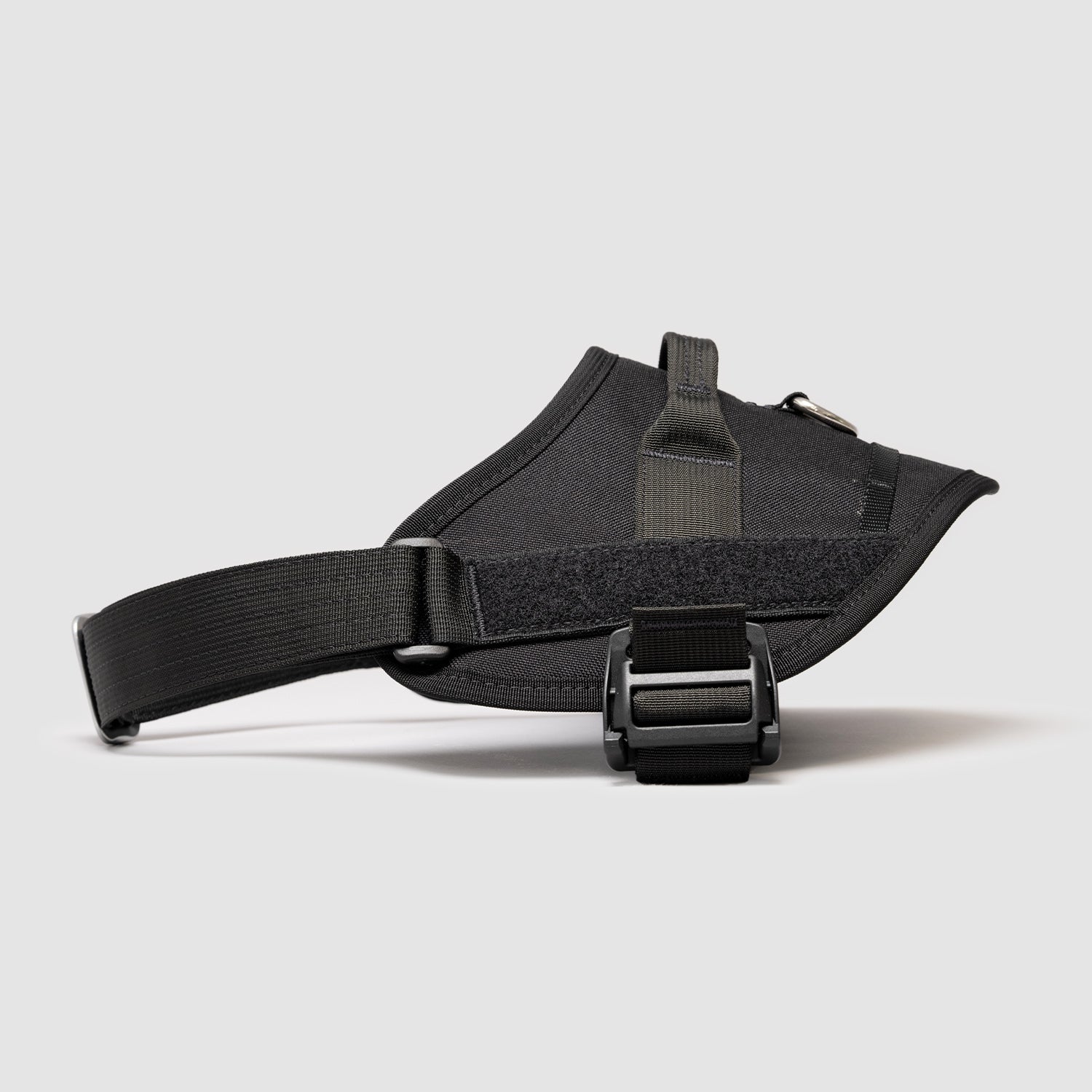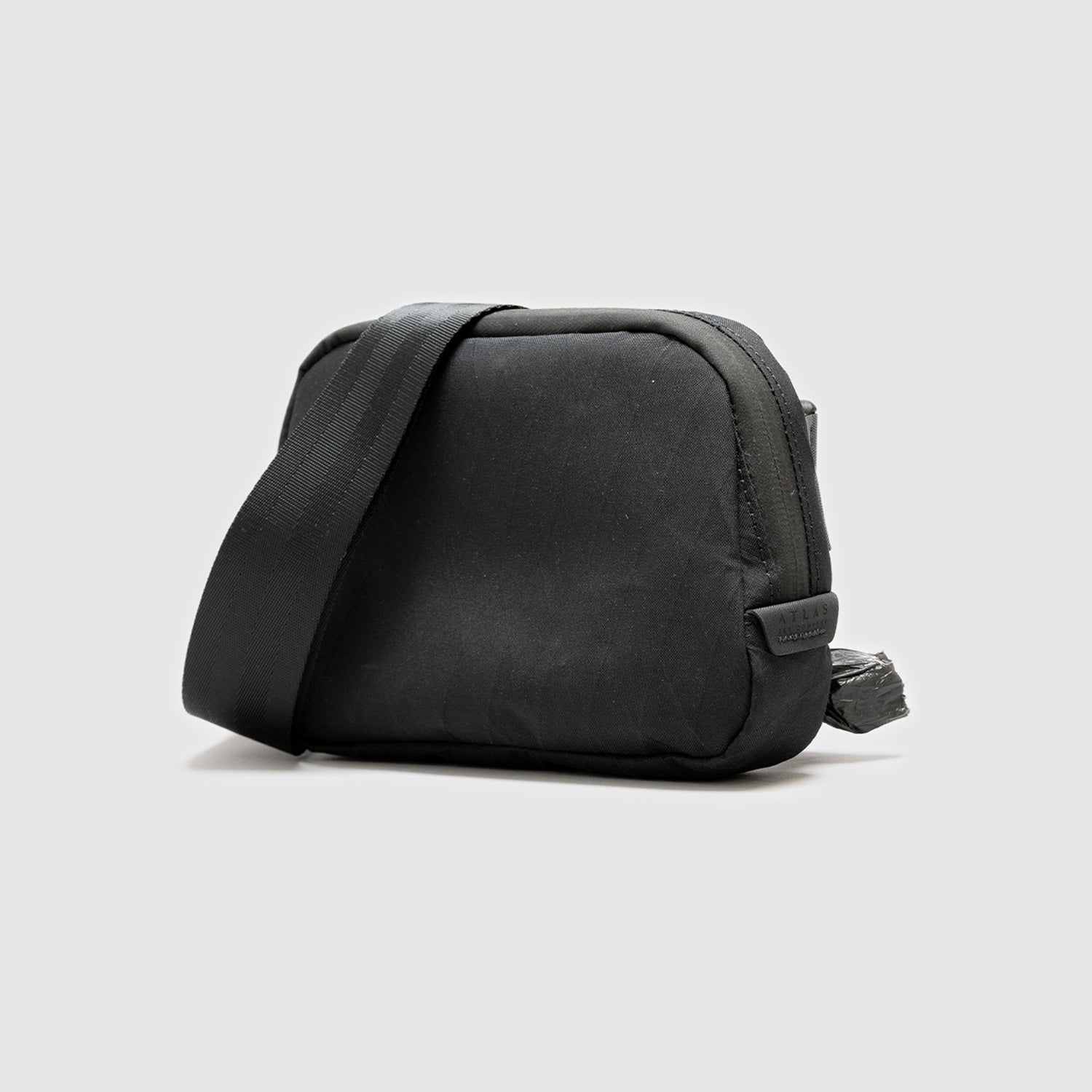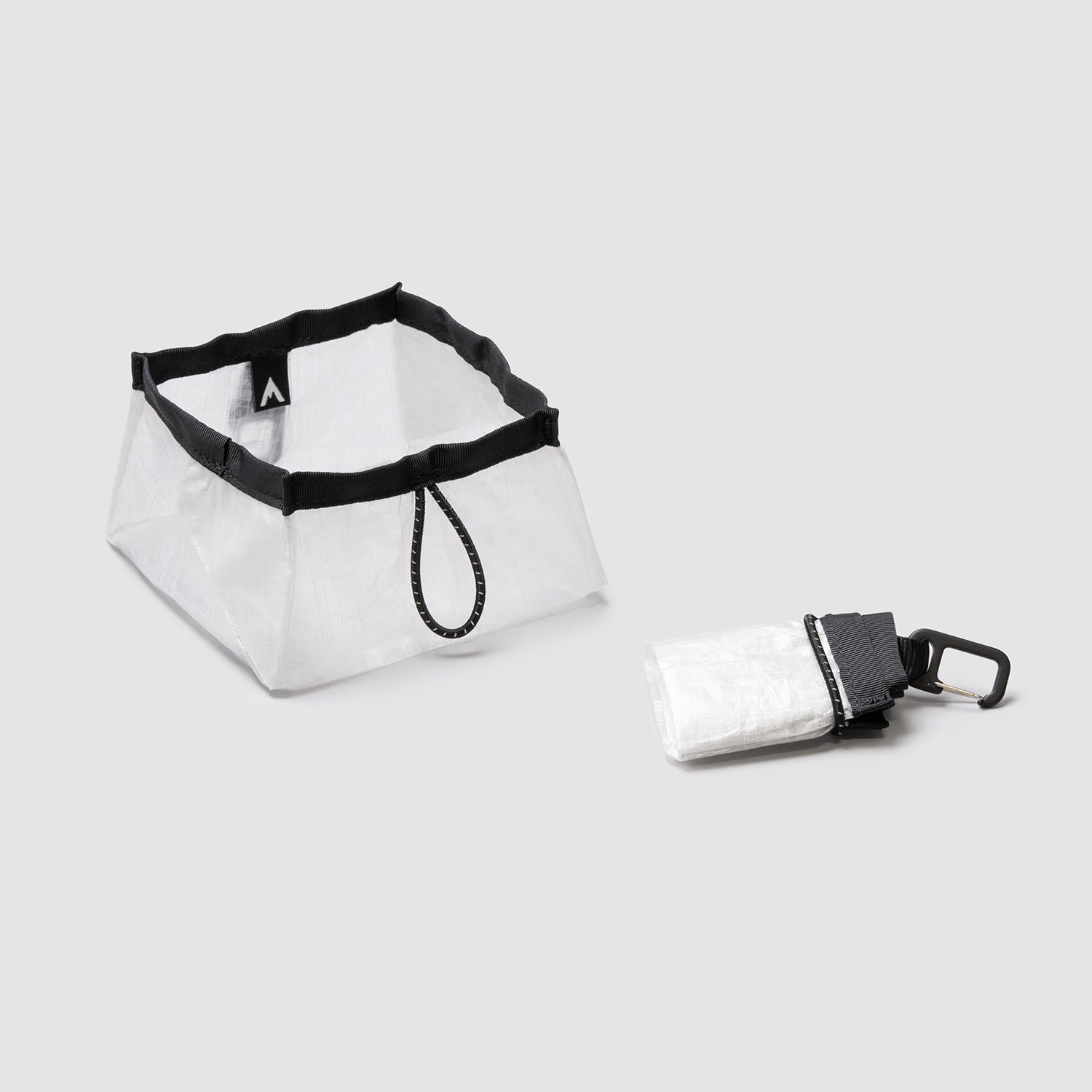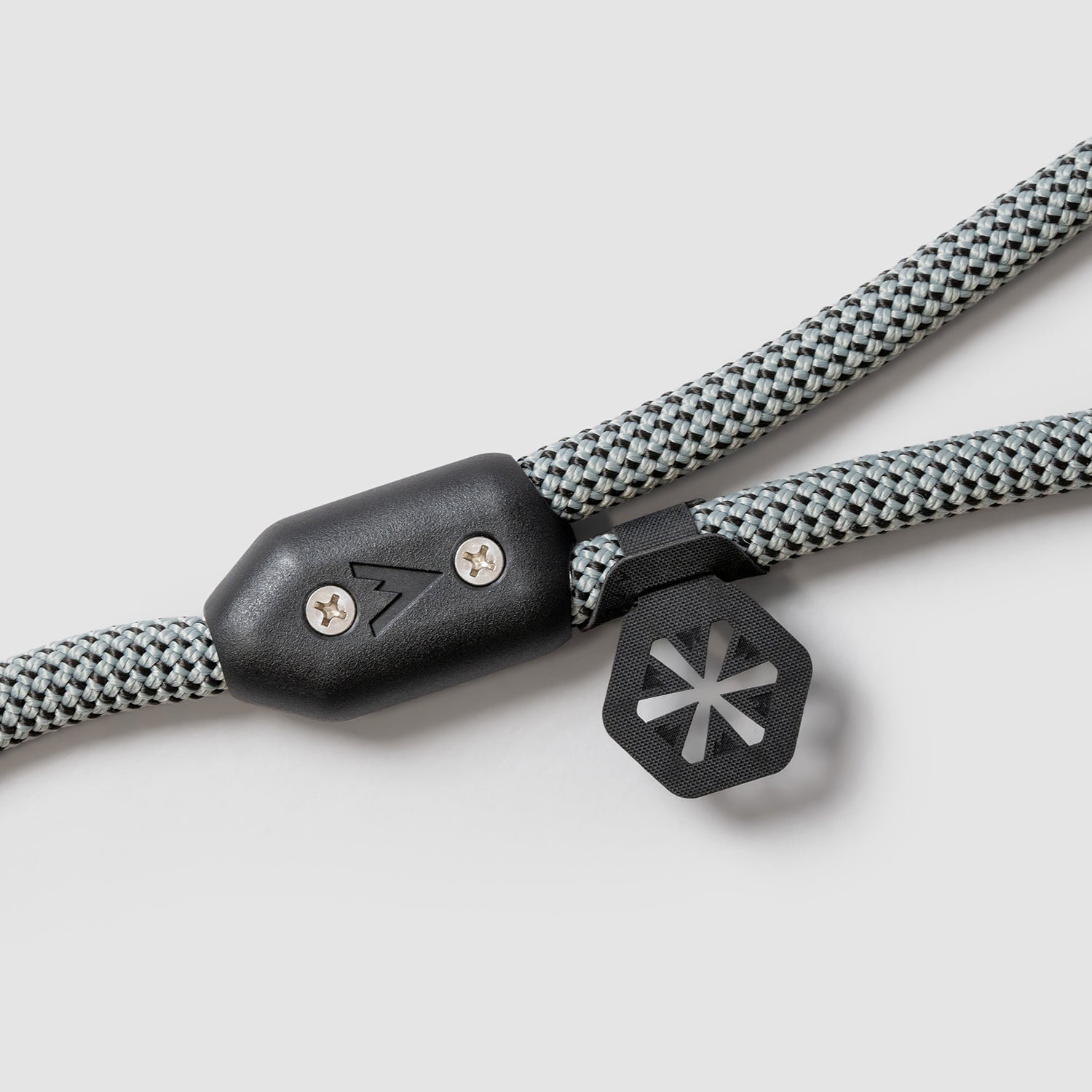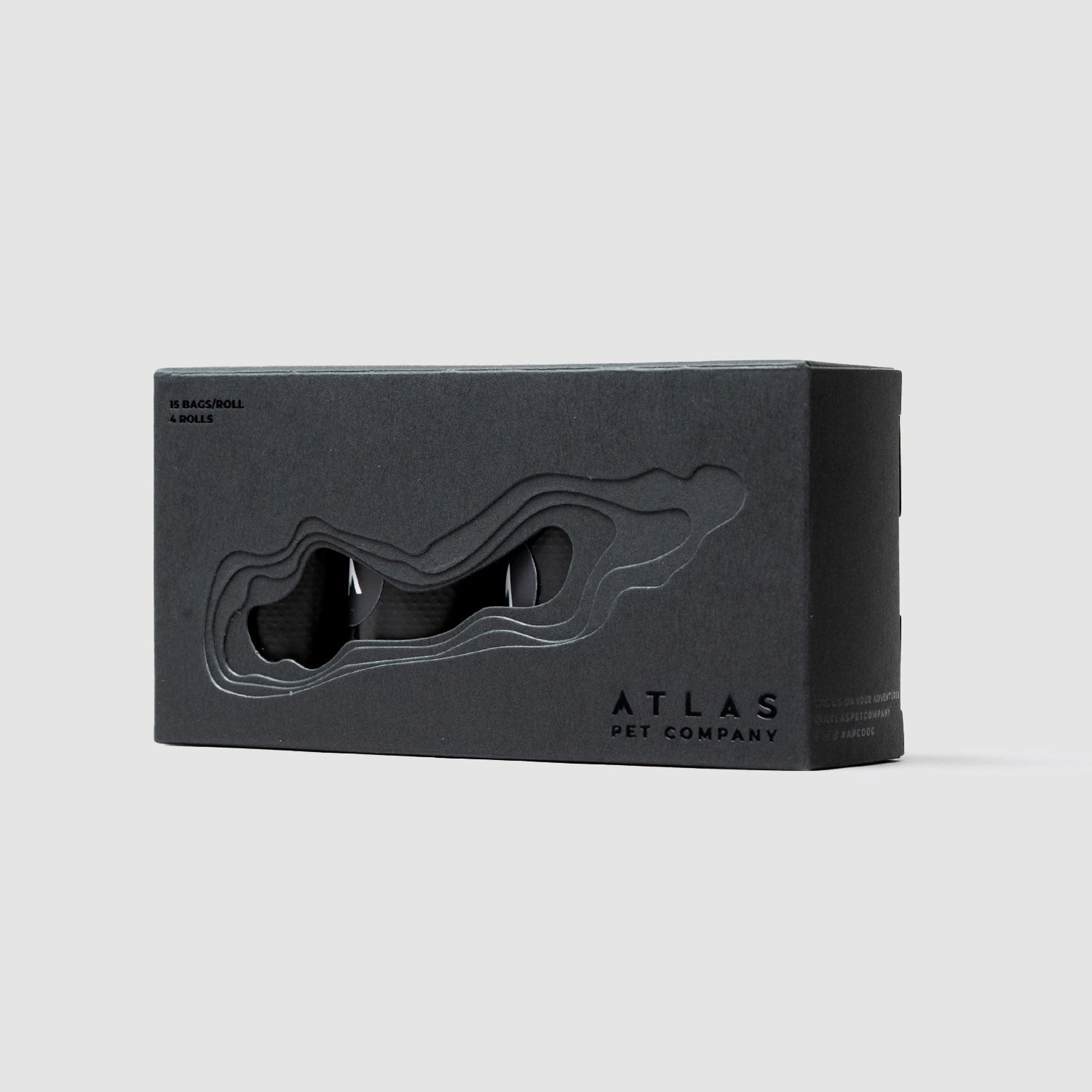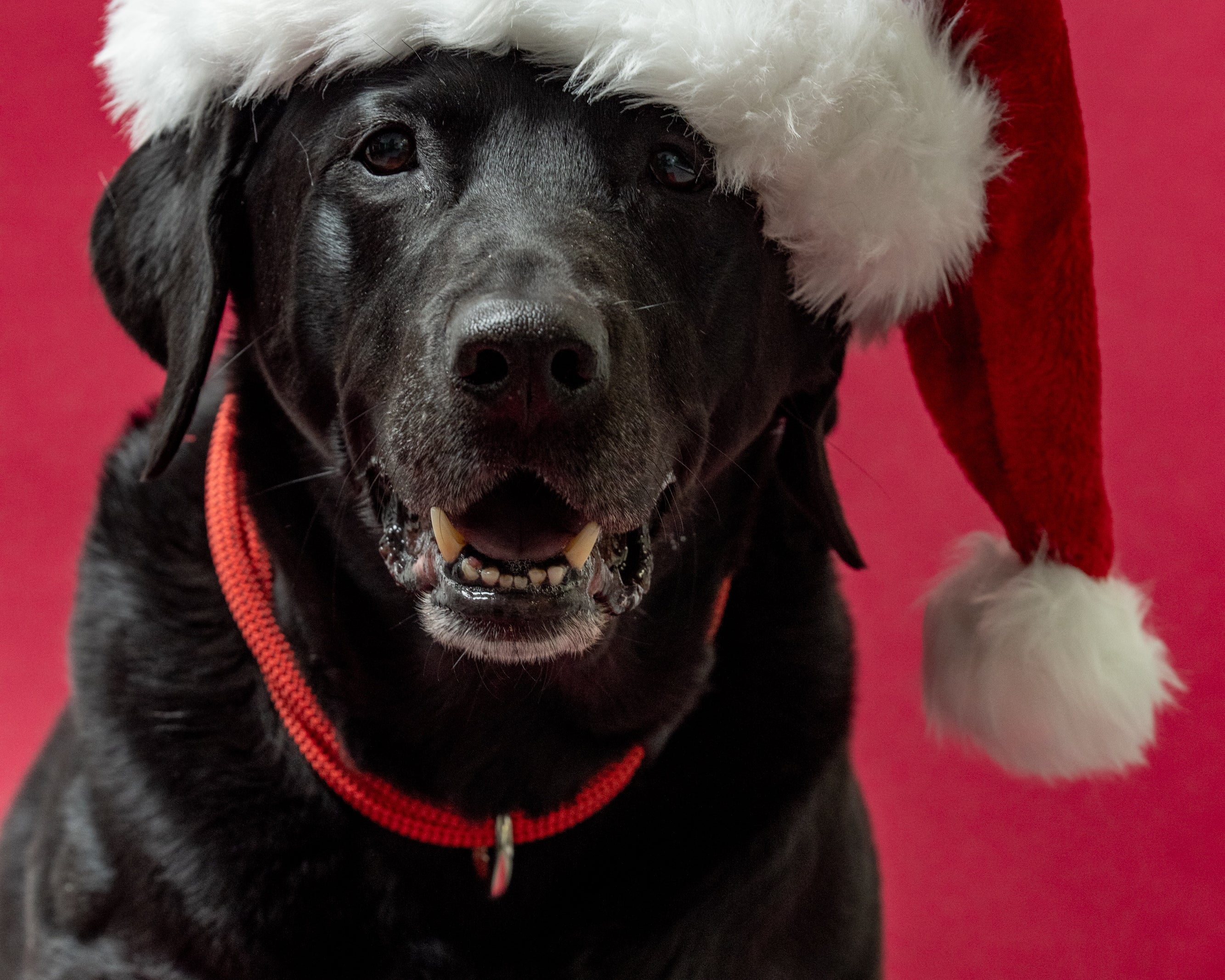How to Choose and Fit a Dog Collar and Harness

Now that you know what gear your dog needs and why, the fun part: shopping for a leash, collar, and harness. Overwhelmed by colors, sizes, and straps? We’re here to help.
Choose a hue.
Ask your pup what his favorite color is, and you’ll probably get the same answer every time: bark. Deciding which tone complements your dog best is not just a matter of taste, though - lifestyle and behavioral considerations will also help you narrow down your options.
For instance, if your mutt spends most of his time adventuring on the trails in forests where hunters are present, the safest bet is a bright collar, like our Honey option. This punchy hue is the universal symbol for “don’t shoot!,” and it looks fetching with most coats.
Social pups who spend a lot of time at dog parks or daycare can benefit from having a uniquely-hued collar so their humans can easily pick them out of a crowd. Try the Lifetime Collar in Glacier or Honey to set your canine apart from the masses. For the pup who is an escape artist, a distinctive collar can be an identifying characteristic within your community; the black lab with a bright collar is much easier to recognize and report than the one wearing fading into the scenery with a black collar.
Simply want to emphasize your dog’s natural beauty? Take a cue from the horse show world, where contrasting colors are used to highlight the richness of the animal’s fur. If your pup is a “warm” tone - think light brown, tan, honey, and apricot - a cool colored collar and leash in silver, lime, or cobalt will really stand out. Conversely, grey, black, and dark brown fur contrasts best with warm colors; try red, orange, or purple gear. White dogs are neutral and look great in any color, and super-bright tones - like our Ruby - are rich enough to make a statement on any pup.
Tip: inspire the APC community with your color combos - tag us on Instagram @atlaspetcompany and #apcdog to share your pup’s unique style.
Of course, you don’t need color theory to tell you what collar to buy; the most important consideration of all is whatever hue you love best. As long as your dog is safely identified, have fun and get as creative with his wardrobe as you’d like.
Getting collared.
You may have heard the general wisdom: a dog’s collar should fit securely, yet allow you to slide two fingers between the material and your pup’s neck. The Lifetime Collar is a different beast, though - because the size is fixed and there’s no buckle, it should fit a bit more loosely to slip over your dog’s head. Forget the two-finger rule - you’ll know that our collar fits if you can glide it past your pet’s ears without a struggle.
Keep in mind that we designed the Lifetime Collar to serve as an ID necklace (and a great place to attach a light). We don’t recommend that you use a neck lead in any case to avoid injury, and our Lifetime Collar is just loose enough that a fiesty pup could wriggle out of it. Check out the Lifetime Lite for a more traditional, adjustable collar if you're set on not using a harness.
Still unsure which size to order? Some general guidelines by breed: choose small for French Bulldogs, Beagles, and Shelties; medium works well for Australian Shepherds, Border Collies, and Viszlas; a large works great for Labs and Goldens; Great Danes and Mastiffs need an extra-large.
Have a little dog who loves adventuring? Check out our Lifetime Lite collar, which adjusts down to smaller sizes than our fixed-length Lifetime Collar.
Tip: if you’re replacing an old collar, break out the measuring tape and see how long it is, then add a couple of inches to get your pup’s Atlas size. Smack in the middle between two sizes? Go for the larger option. Don’t worry if you chose the wrong size the first time - send it back to us and we’ll help you get it right.

Don't forget about the harness.
Handle that harness.
A new harness can be a little daunting for the uninitiated dog owner - what size do I choose? Where do all of these straps go? My dog can’t move his legs - did I do it wrong? (Probably!)
We feel your pain. Fear not - we’re here to help you breeze through that learning curve.
The Lifetime Harness is currently available in three sizes - small, medium and large - to fit dogs between 15 and 125 pounds. Don’t worry about the wide range - we’ve included adjustable belly, chest, and shoulder straps to ensure you get the perfect fit. The martingale-style D-ring attachment also allows the harness to self-adjust on the fly with a simple tug of the leash.
- When you first receive your harness, loosen all three straps to their largest settings.
- The belly strap is the easiest to find because it’s the only one with a buckle - unclip it.
- Choose your orientation: do you want to attach the leash to the front or back of the harness? Consider your dog’s behavior and the activity you’ll be doing together. For example, attaching the leash at the chest will curb your pup’s urge to pull. If you’re going biking with your beast, though, you’ll be positioned above him, which means orienting the D-ring over the shoulders will lessen the chance that he’ll get tangled in the lead.
- Have your dog stand in front of you. With the belly strap dangling and the Atlas logo facing out, slip your pup’s head into the opening between the two other long straps. (Hint: offer him a treat as a reward if putting on his new gear makes him nervous). Make sure that the D-ring is either placed between your dog’s shoulders or in the middle of his chest, depending on your preference.
- Fit the shoulder strap first. Adjust the length so that the metal triangle where the straps meet sits just above and behind your dog’s shoulders. This T-shaped junction should be about equal distance between the top and bottom of his trunk on both sides.
- Fasten the magnetic buckle beneath your pup, then tighten the belly strap until it’s snug - but not too snug! You should be able to slide one or two fingers between each harness strap and your dog’s skin.
- Adjust the chest strap so that it doesn’t droop.
- Spot check: is the D-ring centered? (It should be!). Does the harness rotate if around your dog’s torso? (It shouldn’t). Look at your dog from the side. Do the harness straps look like a sideways “T” or a “Y”? If it makes a “Y,” then you need to lengthen the chest strap. Already at full length? Your harness is too small!
Tip: we designed the Lifetime Harness so your dog should never have to step through anything - it should just slip over his head, then buckle at his belly. If he’s high-stepping into his gear, he’s doing it wrong! Go back to square 1.
Go out in style.
With a proper-fitting harness and collar, all you need to do is snap on your favorite leash, and your pup is ready to take on any adventure. Get out and hit the road - and trails, and beach - in style.
- Tags: Collar vs Harness Gear Guide

